|
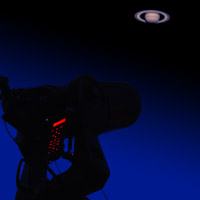 Over
the past decade amateur astronomy has gained access to the Universe to an
extend that had traditionally been reserved to professional astronomers.
Affordable high quality telescopes, CCD cameras and various other tools
allow amateurs to obtain breath-taking views of our solar system, stars
and nebulae within our galaxy and beyond. This site provides a glimpse of
our solar system and other solar worlds as seen by an amateur astronomer
from London, United Kingdom. Over
the past decade amateur astronomy has gained access to the Universe to an
extend that had traditionally been reserved to professional astronomers.
Affordable high quality telescopes, CCD cameras and various other tools
allow amateurs to obtain breath-taking views of our solar system, stars
and nebulae within our galaxy and beyond. This site provides a glimpse of
our solar system and other solar worlds as seen by an amateur astronomer
from London, United Kingdom.
Solar Worlds (the website) was launched in March 2005. All images
displayed have been acquired using the equipment described below.
Your comments and suggestions are very welcome - please email
marc@solarworlds.co.uk.
Marc Pinter-Krainer
Location
To date, all images have been obtained from (very light polluted!) North London, United Kingdom:
51 degrees North, 0 degrees West.
Telescope
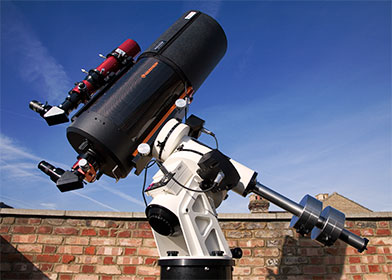
Celestron C11 mounted on an Astro-Physics AP1200GTO mount
The current setup comprises of the 11-inch Celestron C11 Optical
Assembly Tube (OTA) which features a focal length of 2,800mm and Starbright XLT Coatings.
The mount is the heavy-duty Astro-Physics AP 1200 GTO which I received after a couple of years on the waiting list. Other
than high tracking accuracy this beautifully engineered mount offers a capacity to carry instruments of up to 140 lb (63kg)
weight.
The pier is made by Advanced Telescope Systems (ATS), and I tend to set everything up on the roof terrace a couple of hours
ahead of a session - to allow sufficient time for cooling.
The gorgeous red scope riding on top is the 80mm Zenithstar refractor made by William Optics:

William
Optics Zenithstar 80 Fluorite Doublet (10th anniversary
edition)
This 80mm aperture refractor has a focal length of 555mm and has been
co-designed with American leading optical designer Thomas Back.
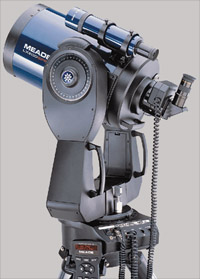 Some of the work presented here was
carried out with my previous scope, a Meade
LX200 GPS Schmidt-Cassegrain telescope with 8" aperture and Ultra High
Transmission Coating (UHTC). Some of the work presented here was
carried out with my previous scope, a Meade
LX200 GPS Schmidt-Cassegrain telescope with 8" aperture and Ultra High
Transmission Coating (UHTC).
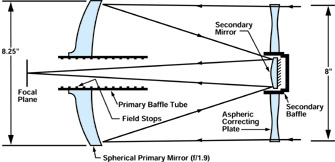
In the Schmidt-Cassegrain telescope design light enters from the right,
passes through a thin lens with 2-sided aspheric correction ("correction
plate"), proceeds to a spherical primary mirror, and then to a convex
secondary mirror. The convex secondary mirror multiplies the effective
focal length of the primary mirror and results in a focus in the focal
plane, with light passing through a central perforation in the primary
mirror.
Cameras
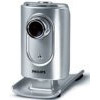 Philips
Toucam Pro II (webcam) Philips
Toucam Pro II (webcam)
Perhaps surprising to the novice amateur astronomer, the best planetary
and lunar images can be obtained using a standard webcam. Atmospheric
effects make it difficult to obtain a clear, good quality snapshot in a
single frame. By recording a video clip with hundreds of frames it is
possible to capture a number of high quality frames for which the seeing
conditions were temporarily favourable. Stacking software such as
Registax is
used to identify and stack good frames to yield a higher signal to noise
ratio.

Sony DSC-V1 (digital still camera)
For some objects the relatively high resolution (5 mega pixels) of the Sony
DSC-V1 digital camera can be advantageous. Single moon shots tend to come
out quite well, and even deep sky objects such as star clusters can be
captured with an exposure time of up to 30 seconds.

Canon EOS 350D (DSLR)
Some of the images here were obtained using a Canon EOS 350D camera which is a high resolution (8 mega
pixels) successor to the 300D "Digital Rebel" which has been highly
popular with hobby astro-photographers.
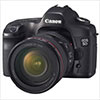
Canon EOS 5D (DSLR)
The most recent acquisition has been the Canon EOS 5D digital SLR camera which features a full-size CCD chip and a high 12.8
mega pixel resolution. Most of my digital photography was
also taken with this fantastic camera.
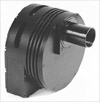 SBIG
ST-7ME (cooled CCD camera) SBIG
ST-7ME (cooled CCD camera)
This specialist CCD camera is used for capturing images of faint deep sky
objects such as galaxies, nebulae and star clusters. It is highly
sensitive with a peak quantum efficiency (the ratio of light photons
converted into measurable electrons) of > 80%. The chip temperature is
cooled to -40 degrees below ambient to minimise noise. A secondary CCD chip is
used for guiding during image acquisition, allowing for long exposure
times.
|








 Over
the past decade amateur astronomy has gained access to the Universe to an
extend that had traditionally been reserved to professional astronomers.
Affordable high quality telescopes, CCD cameras and various other tools
allow amateurs to obtain breath-taking views of our solar system, stars
and nebulae within our galaxy and beyond. This site provides a glimpse of
our solar system and other solar worlds as seen by an amateur astronomer
from London, United Kingdom.
Over
the past decade amateur astronomy has gained access to the Universe to an
extend that had traditionally been reserved to professional astronomers.
Affordable high quality telescopes, CCD cameras and various other tools
allow amateurs to obtain breath-taking views of our solar system, stars
and nebulae within our galaxy and beyond. This site provides a glimpse of
our solar system and other solar worlds as seen by an amateur astronomer
from London, United Kingdom.

 Some of the work presented here was
carried out with my previous scope, a
Some of the work presented here was
carried out with my previous scope, a 
 Philips
Toucam Pro II (webcam)
Philips
Toucam Pro II (webcam)


 SBIG
ST-7ME (cooled CCD camera)
SBIG
ST-7ME (cooled CCD camera)